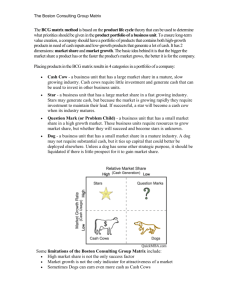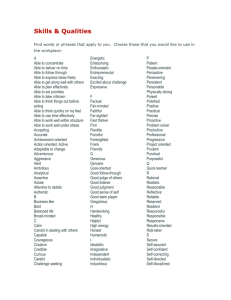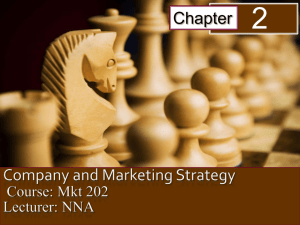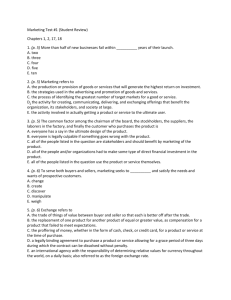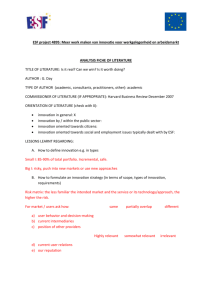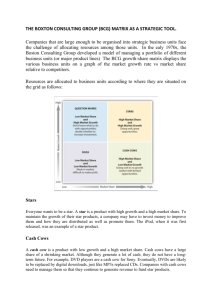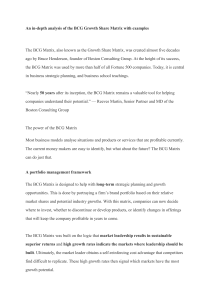Marketing Strategy Formulation Process and Strategic Analysis
advertisement
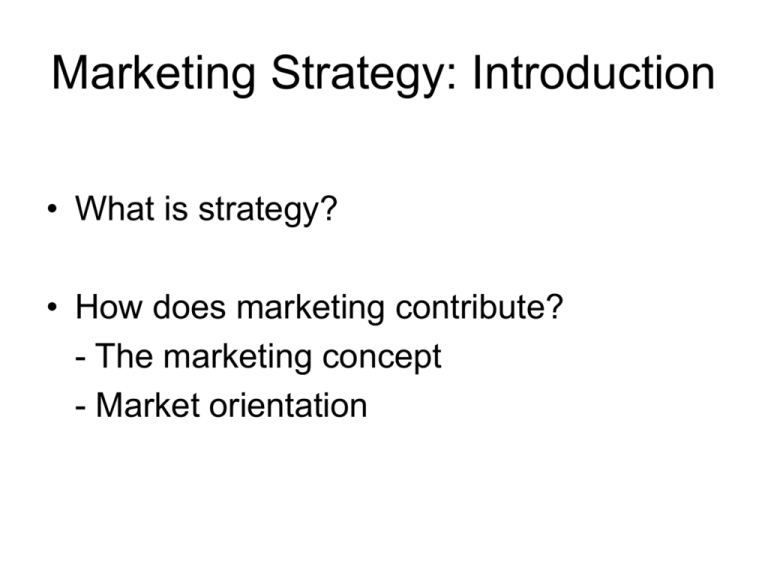
Marketing Strategy: Introduction • What is strategy? • How does marketing contribute? - The marketing concept - Market orientation Marketing Strategy: Introduction • What is strategy? A fundamental pattern of present and planned objectives, resource deployments, and interactions of an organization with markets, competitors, and other environmental factors “…the search for a favourable competitive position…” (Porter, ‘85) Marketing Strategy: Introduction • Corporate strategy -organizations scope and resource deployment • Business-level strategy -competitive strategy of a business unit in its industry • Marketing strategy -targeting, segmenting and positioning for a product. Figuring out the marketing mix Marketing Strategy: Introduction • What is the marketing concept? “…determining the needs and wants of target markets and delivering the desired satisfactions more effectively and efficiently than competitor’s do.” (Kotler et al, ‘96) Marketing Strategy: Introduction What do marketers mean when they say their firms are market oriented? Marketing Strategy: Introduction What are advantages and disadvantages of market orientation? Why do some firms lack orientation towards the market ? Marketing Strategy: Introduction Market oriented in not marketing oriented - information on all important buying influences permeates every corporate function -Strategic/tactical decisions are made interfunctionally and inter-divisionally -divisions and functions make well-coordinated decisions and execute them with commitment Marketing Strategy: Introduction Which should come first – the customer need or the product idea? - Marketing myopia Discussion questions Q.1 : In defining their strategies, should companies pursue broadly or narrowly defined missions? Q. 2: What are the advantages of each approach? Characteristics of Effective Corporate Mission Statements Functional Based on customer needs Broad Specific Transportation business Long-distance transportation for largevolume producers of lowvalue, low-density products Railroad business Long-haul, coal carrying Physical railroad Based on existing products or technology Ansoff Strategies Current Markets Current Products Market penetration strategy New Products Product development strategy New Markets Market development strategy Diversification strategy The BCG Growth Share Matrix High Stars Question marks 5 Market growth rate 10% (in constant dollars) 4 6 Cash cows 9 2 1 11 Dogs 12 3 7 8 10 13 Low 10 1 Relative market share Source: Adapted from Barry Hedley, “Strategy and the Business Portfolio,” Long Range Planning 10 (February 1977). 0.1 Growth rate (cash use) Cash Flows Across Businesses in the BCG Portfolio Model High Question marks Stars Cash Flows Low Cash cows High Dogs Relative market share Low Desired direction of business development Business’s competitive position The GE Nine-Cell Matrix Industry attractiveness High Medium Low High 1 1 2 Medium 1 2 3 Low 2 3 3 1 Invest/grow 2 Selective investment/ maintain position 3 Harvest/divest

